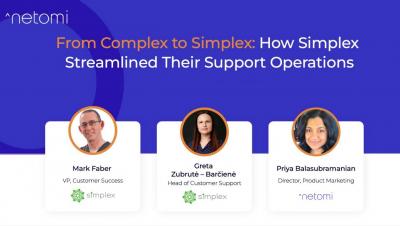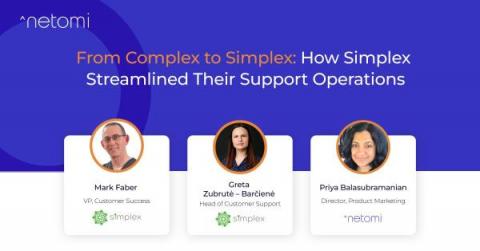Teams | Collaboration | Customer Service | Project Management
Netomi
What's happening to customer experience in this post-pandemic world? - Ft. Nick Mehta, CEO Gainsight
From Complex to Simplex | How Simplex Streamlined Their Support Operations
From Complex to Simplex: How Simplex Streamlined Their Support Operations
Netomi’s customer base spans a range of industries, from travel and retail, to gaming and fintech.
The 8 Best Customer Service Tools to Aid in a Connected Customer Journey
Today’s customer support professionals have a lot on their plates – from interacting directly with customers and managing a steady stream of support tickets, to creating and updating libraries of self-service content. All this, while under pressure to keep customer satisfaction high and resolution time low.
Fueling the Gig Economy: How AI Can Help Fintech Companies Serve this Booming Workforce
In light of rising inflation, pandemic-era job losses and the work-life balance mindset, a growing number of individuals have embraced gig economy work. A 2022 Gig Payments Report pointed out that, in 2021, there were about 23.9 million independent workers in the United States, an increase from 12.9 million in 2017. Moreover, the number of freelancers across the country is projected to grow to 86.5 million by 2027.
Forging Connections in the Cloud: How SaaS Companies Can Leverage AI to Deliver a Superb Customer Experience
It is a digital world indeed, and one in which software, in its various forms, stands as a vital component of daily life. Also known as “on-demand” software, Software as a Service (SaaS) refers to a licensing and delivery model whereby software is licensed on a subscription basis and hosted centrally. A SaaS cloud-based service is accessible through an internet browser, rather than users needing to download and install software on a PC or business network.
CX Leader Insights: Industry Musings & Trends from Chili Piper's Gemma Cipriani-Espineira
Customer experience (CX) is now more important than ever, and even the White House is taking note: in a move to fix federal customer experience, the Office of Management and Budget will conduct research to better comprehend how people wish to deal with the government at various critical points in their lives. Further proof: findings from an April 2022 survey by TELUS International found that nearly 60% of consumers said they would rather sit in a traffic jam than have a poor customer experience.
How Ticket Triage AI Can Revolutionize Customer Service
Customer support tickets come in various shapes and forms, and from multiple channels – webforms, email, messaging and live chat. When a ticket enters a support team’s inbox, many companies triage it, tagging it based on the topic or urgency, and route it to the appropriate agent or team. This process helps streamline workflows, ensuring the right eyes are on the right ticket, and issues are resolved as quickly and accurately as possible.











